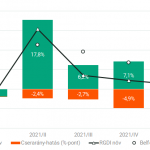2020 januárjától a MT/DP Műhelytanulmányok és a Budapest Working Papers sorozat egybeolvadt, és a továbbiakban KRTK-KTI Műhelytanulmányok cím alatt közli az intézet kutatóinak tudományos munkáját. A KRTK-KTI Műhelytanulmányok célja, hogy hozzászólásokat, vitát generáljanak, nem mentek át szakmai ellenőrzésen.
A megszűnt sorozatok tanulmányai az alábbi linkeken érhetőek el:




